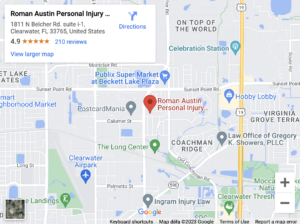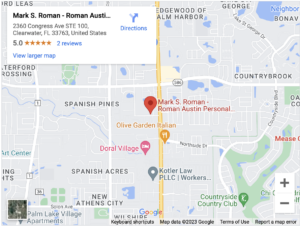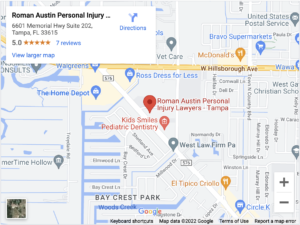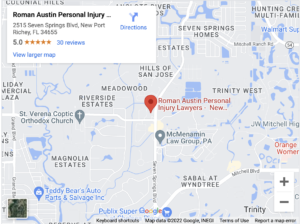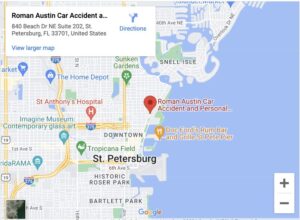
If someone causes an injury, they can be held financially liable for any damages caused by the injury. Damages might include physical injuries, medical bills, loss of income, mental anguish, and emotional distress. The damages an accident victim might be entitled to receive are based on the facts and circumstances of the case.
However, before you can recover compensation for injuries and other damages caused by an injury or accident, you must prove the other party is legally responsible for the damages. In most personal injury claims, it means you must prove that the other party was negligent.
What is Negligence?

Negligence is a legal theory used to hold another person legally liable for damages and harm caused by that person. The definition of negligence is the failure to act with the level of care that a person with ordinary prudence would have used in the same or similar situation.
Negligent conduct generally involves doing something, such as texting while driving or driving under the influence of alcohol. However, negligence also includes the failure to act, such as a property owner failing to repair broken steps or provide adequate lighting to prevent injuries.
How Do I Prove a Negligence Claim?

Negligence is the basis for most personal injury claims. So, how to prove negligence? Proving that an accident occurred is not sufficient to create liability. You must prove each of the legal elements of a negligence claim before you can hold a personal financially liable for your injury and damages.
What do you need to prove negligence? Learn about the four basic legal elements of a claim:
Duty of Care
There must exist a duty between the parties. A duty of care is the legal requirement for one party to act in a certain way regarding the other party. A duty of care is typically created because of the relationship between the parties.
For example, doctors owe a duty of care to their patients. Drivers have a duty of care to obey traffic laws. Property owners have a duty of care to maintain their premises in a safe condition.
Breach of Duty of Care
When a party breaches the duty of care, the party could be liable for damages caused by the breach. Breaches of the duty of care occur when a person fails to perform or acts in a manner inconsistent with reasonable care. As discussed above, reasonable care is based on what a prudent person would have done in the same or similar situation.
For example, a person acting with reasonable care would not operate a boat under the influence of alcohol. A reasonable person would slow down when they were approaching a crosswalk to avoid a pedestrian accident. A doctor would order diagnostic tests for a patient presenting symptoms of a brain injury.
The “reasonable conduct” that would apply in a case can be difficult to determine in some injury cases. For example, for proving negligence in a medical malpractice case, medical experts must review the circumstances and facts of the case to determine the standard of care and how the doctor’s conduct deviated from the standard of care.
Other breaches of duty may be more evident. For example, a driver rear-ends another vehicle because the driver was texting while driving. Another example might be a construction company failing to secure hazardous materials.
Causation
The third element of negligence can be the most difficult to prove in some cases. There must be a clear link between the breach of duty and the cause of the victim’s injury. In other words, the breach of duty must be a “direct and proximate” cause of the situation or accident that resulted in the victim’s injury.
Let’s assume that a doctor failed to order a diagnostic test. The patient died because of a heart attack. However, the doctor should have ordered the diagnostic test to determine if the patient had a kidney infection. There would be a question of whether the failure to order the test was a cause of the patient’s heart attack.
However, if the diagnostic test were to determine if the patient had high cholesterol, failing to diagnose and treat cholesterol could be a factor in the patient’s heart attack. Medical experts would need to analyze the case to determine whether there was a link between the breach of care and the heart attack.
If the breach of care cannot be directly related to the harm sustained by the victim, you cannot prove negligence. A person may make errors or mistakes without being guilty of negligence.
Damages
The final step in proving negligence in a claim is to establish damages. You can prove that a doctor breached the duty of care, but if the patient did not suffer harm or damages, the doctor is not guilty of medical malpractice.
Damages in a personal injury case include physical injuries. However, damages also include a variety of economic and non-economic harm.
Examples of damages in a personal injury claim include, but are not limited to:
- Physical pain and suffering
- Disabilities and permanent impairments
- Past, present, and future medical expenses
- Cost of in-home health care, personal care, and long-term care
- Loss of income, such as salaries, wages, bonuses, benefits, commissions, and other forms of income
- Mental and emotional suffering and anguish
- Scarring and disfigurement
- Loss of enjoyment of life and decreases in quality of life
Careful documentation of damages in a personal injury case increases the chance that you can recover maximum value for your injury claim.
Do I Need to File a Lawsuit for a Negligence Claim?

Most negligence claims are settled without filing a personal injury lawsuit. Your attorney and the other party negotiate a settlement based on the facts of your case. If the other party refuses to negotiate in good faith, your attorney may recommend filing a lawsuit to protect your best interests.
In some cases, the other party might raise allegations of comparative fault to avoid liability for an injury claim. Under Florida’s modified comparative fault law, a victim cannot receive any compensation for their damages if they were over 50% at fault for the cause of their injury. If your shared responsibility is 50% or less, your damages will be proportionately reduced to reflect your share of blame.
Therefore, if the other party alleges you are partially responsible for the cause of the accident, your lawyer may recommend filing a personal injury lawsuit. On the other hand, if you are partially at fault, it could be better to accept a settlement instead of taking the matter to court.
Call Our Florida Personal Injury Lawyer for a Free Consultation

Sorting out fault and liability for an accident can be a complicated task. Our Florida personal injury attorneys have the resources, skills, time, and experience necessary to investigate accidents and injuries to identify the parties responsible for causing your injury.
Contact today to schedule your free consultation at (727) 787-2500 to discuss your case with a lawyer. Roman Austin Personal Injury Lawyers will analyze your case and your options for recovering compensation for a negligence claim.

